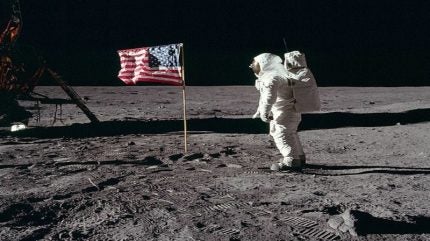
US President Donald Trump has announced a budget amendment to include an additional $1.6bn to fund Nasa’s efforts to send humans to the Moon by 2024.
Subject to US Congress approval, the amendment represents an increase over the initial $21bn request by the space agency in the 2020 budget.
The increase will boost Nasa’s bid to send the first American female astronaut to the lunar surface, decades after the last American male human walked on the Moon in 1972.
Nasa has announced the name of its lunar mission as Artemis. Referencing Greek mythology, Artemis is the twin sister of Apollo and the goddess of the moon.
Apart from the first woman, Artemis will also carry the next man to the Moon.
The agency originally planned to land astronauts on the moon by 2028. The Trump administration challenged Nasa to accelerate the project for a scheduled landing within the next five years.
Trump wrote on Twitter: “Under my Administration, we are restoring @NASA to greatness and we are going back to the Moon, then Mars.”
He said that the additional funding will allow the country to make a return to space ‘in a big way’.
Nasa administrator Jim Bridenstine said: “This investment is a down payment on Nasa’s efforts and will allow us to move forward in design, development and exploration.”
The agency will use $1bn to support the development of commercial human lunar landing systems.
An additional $651m would be dedicated to the Space Launch System (SLS), a rocket designed for the lunar mission, and Orion, a manned crew capsule to carry astronauts to deep space.
Exploration technologies such as solar-electric propulsion and a demonstration converting polar ice to water will benefit from an additional $132m.
Approximately $90m will augment robotic exploration of the Moon’s polar regions in advance of a human mission.
Boeing is the prime contractor for the SLS rocket, which Nasa plans to use for missions to the Moon and even Mars.
At a Senate hearing in March, Bridenstine suggested the agency is exploring all possible alternatives, including using a commercial rocket, to make sure the Orion capsule is launched as planned.


